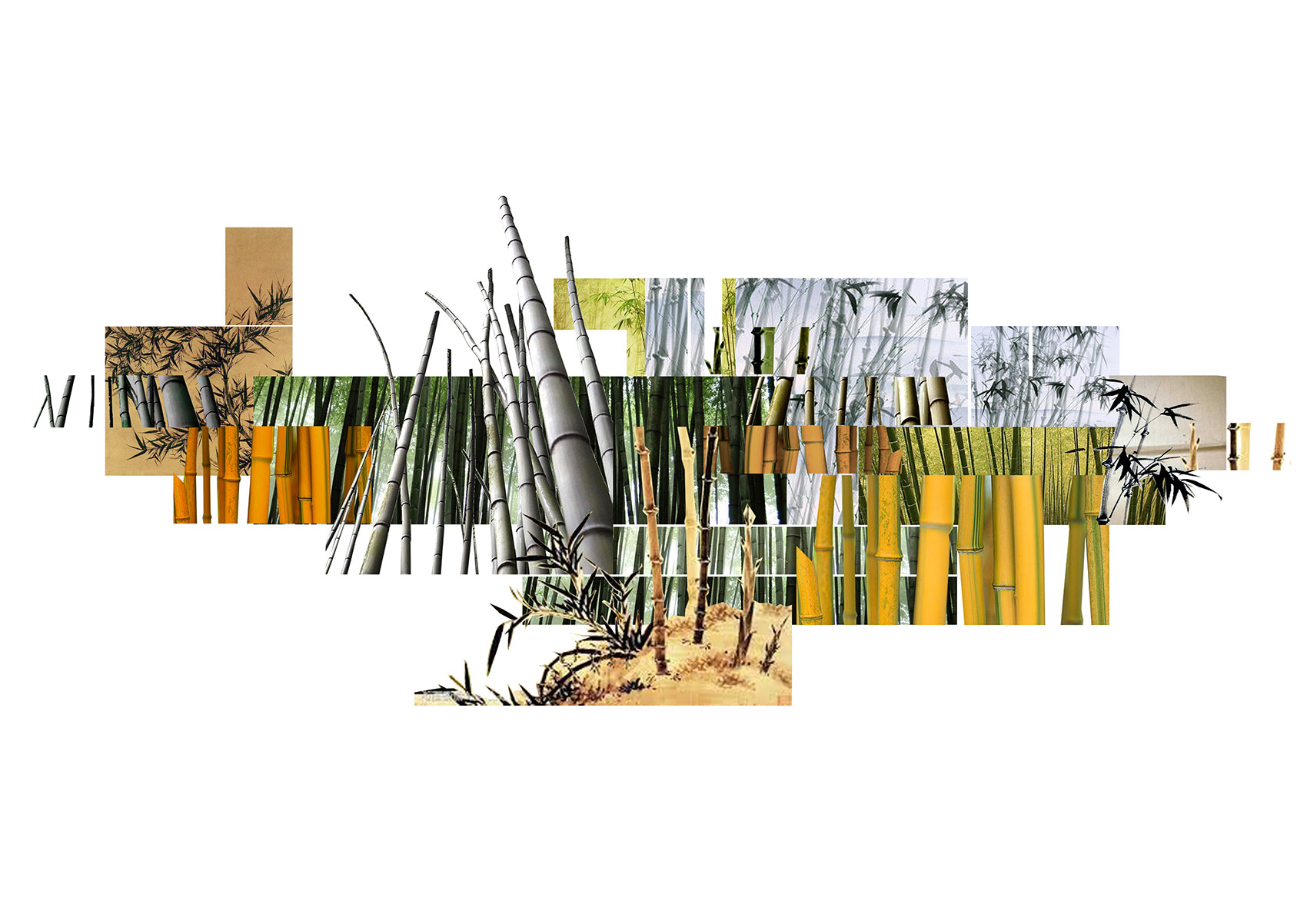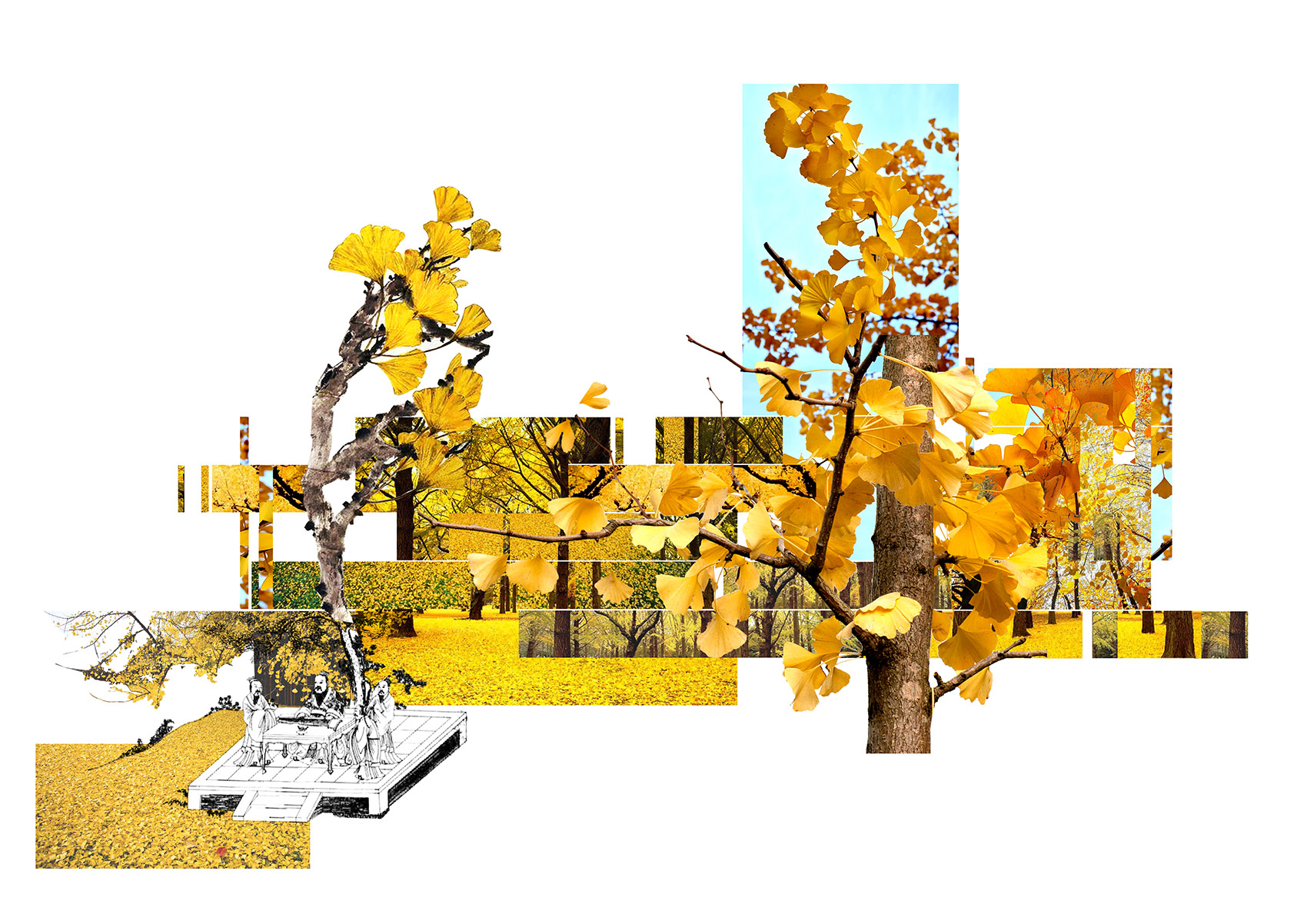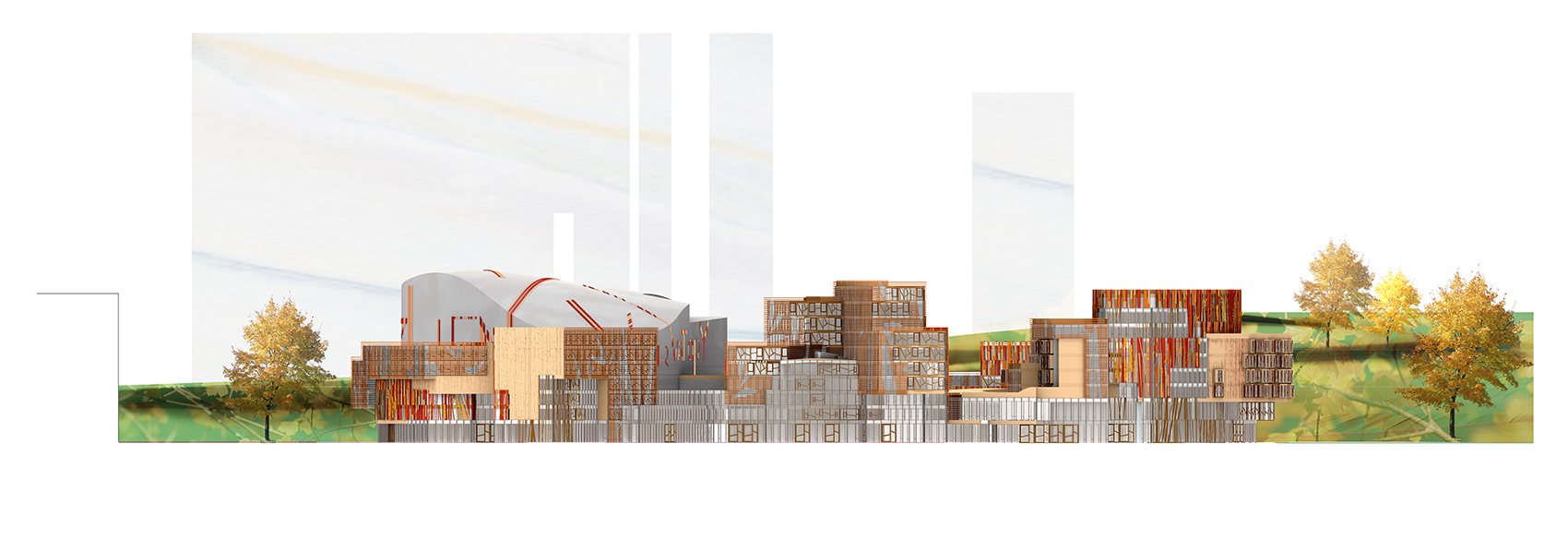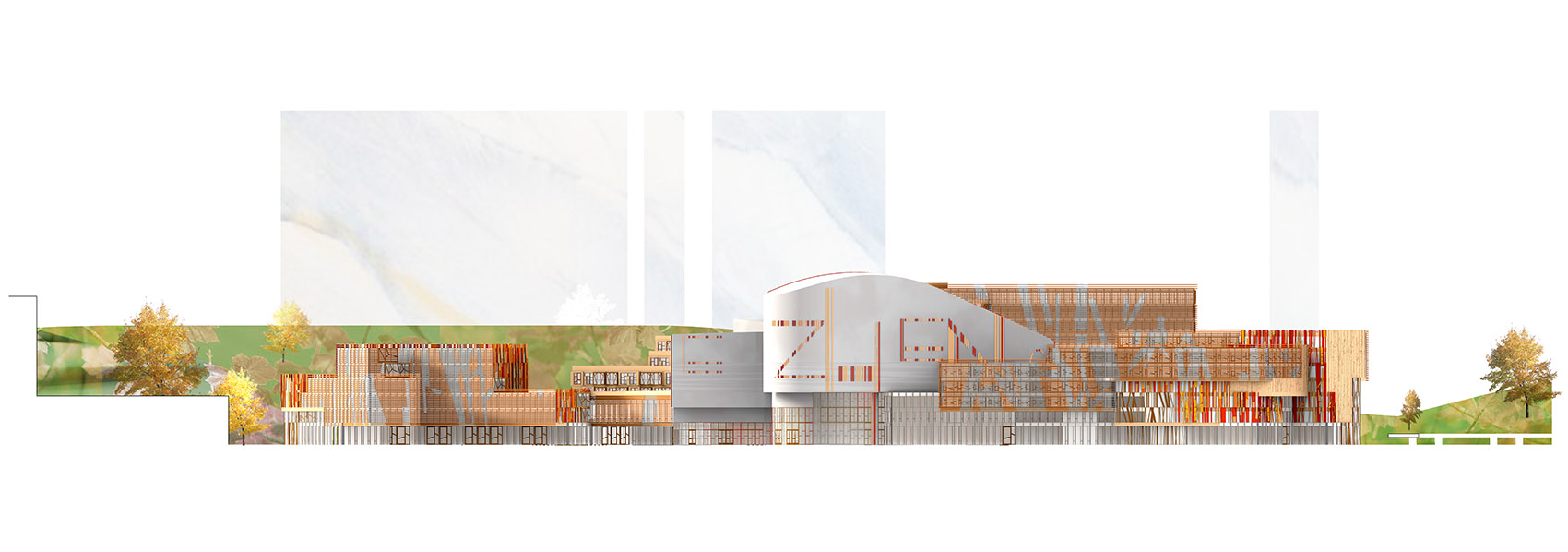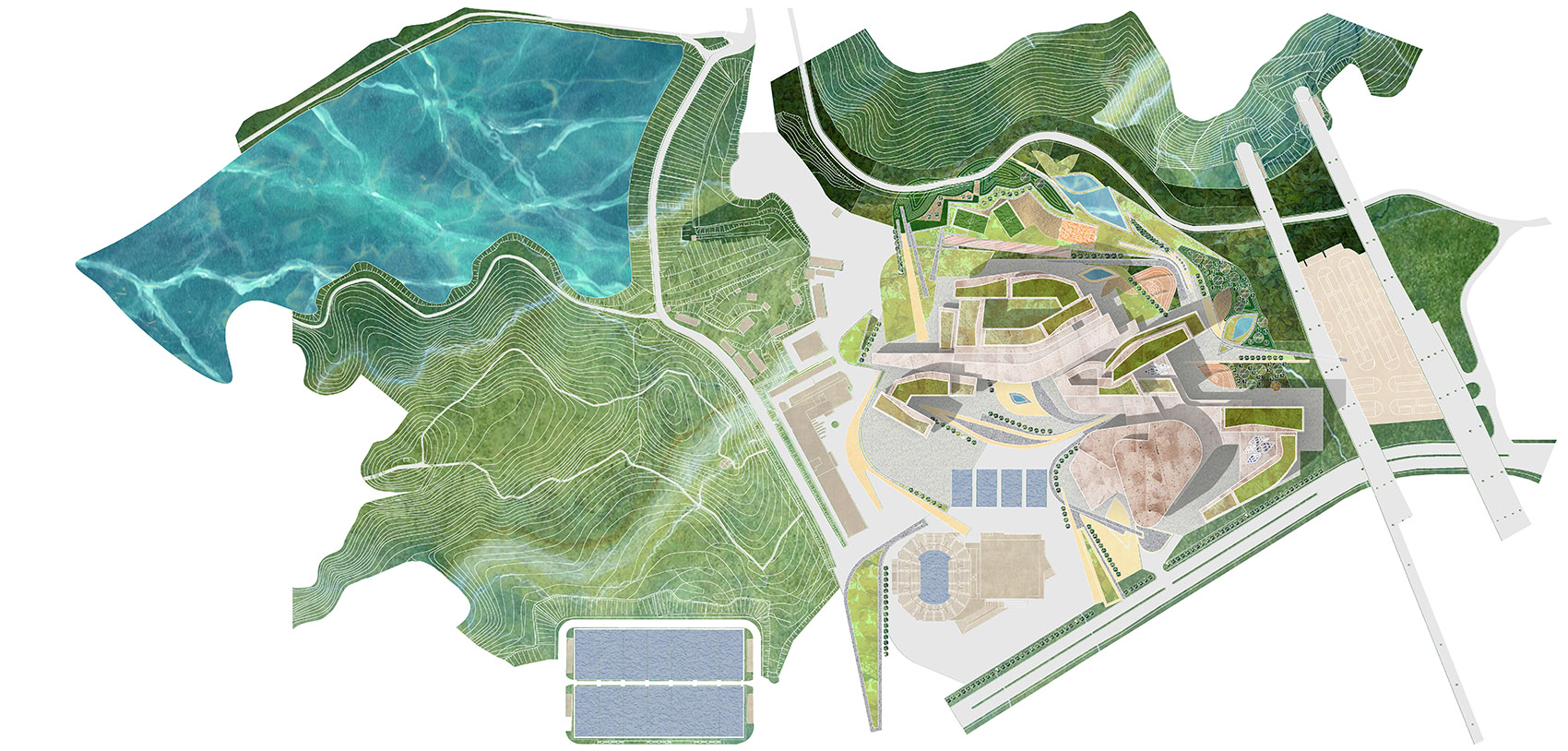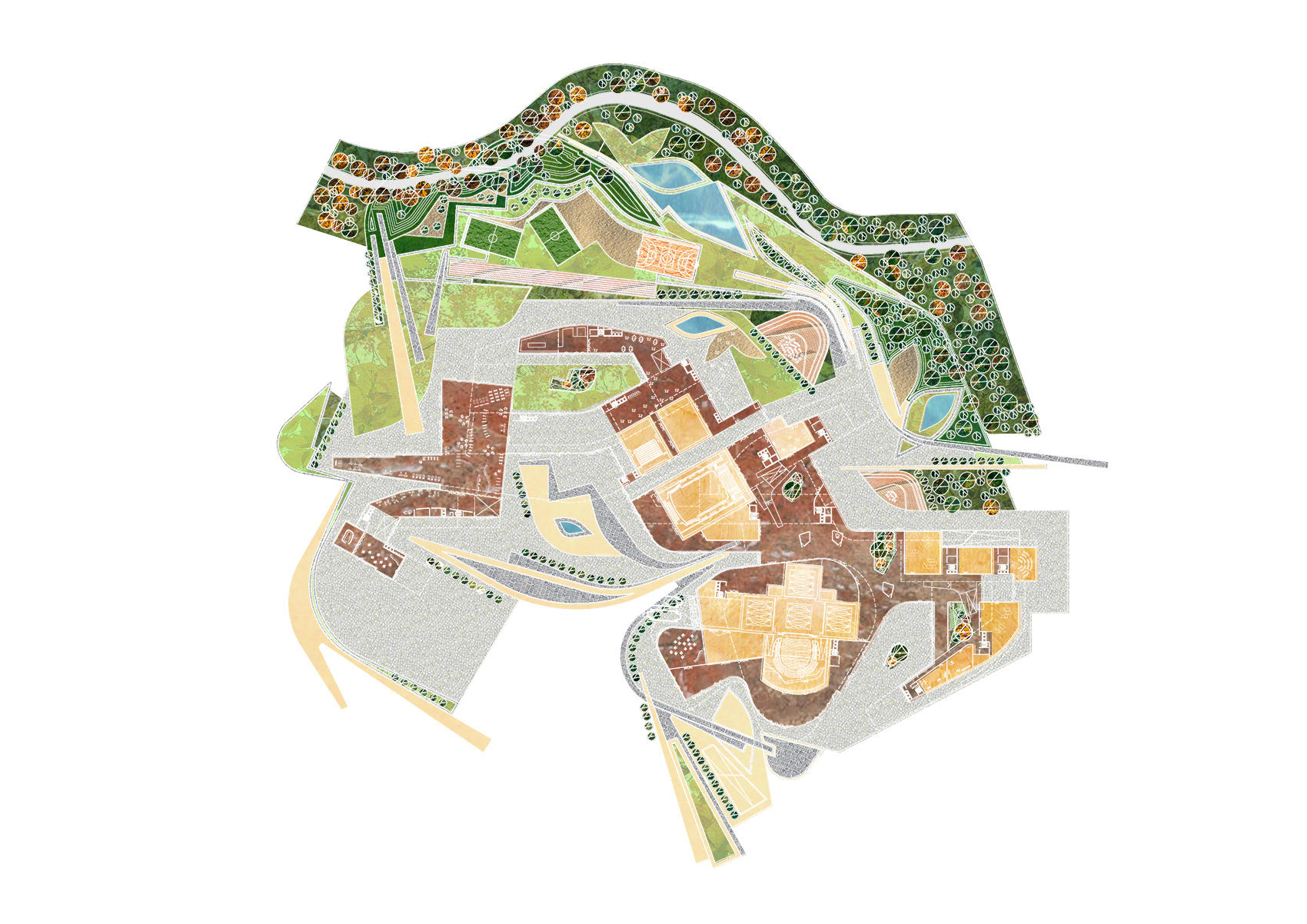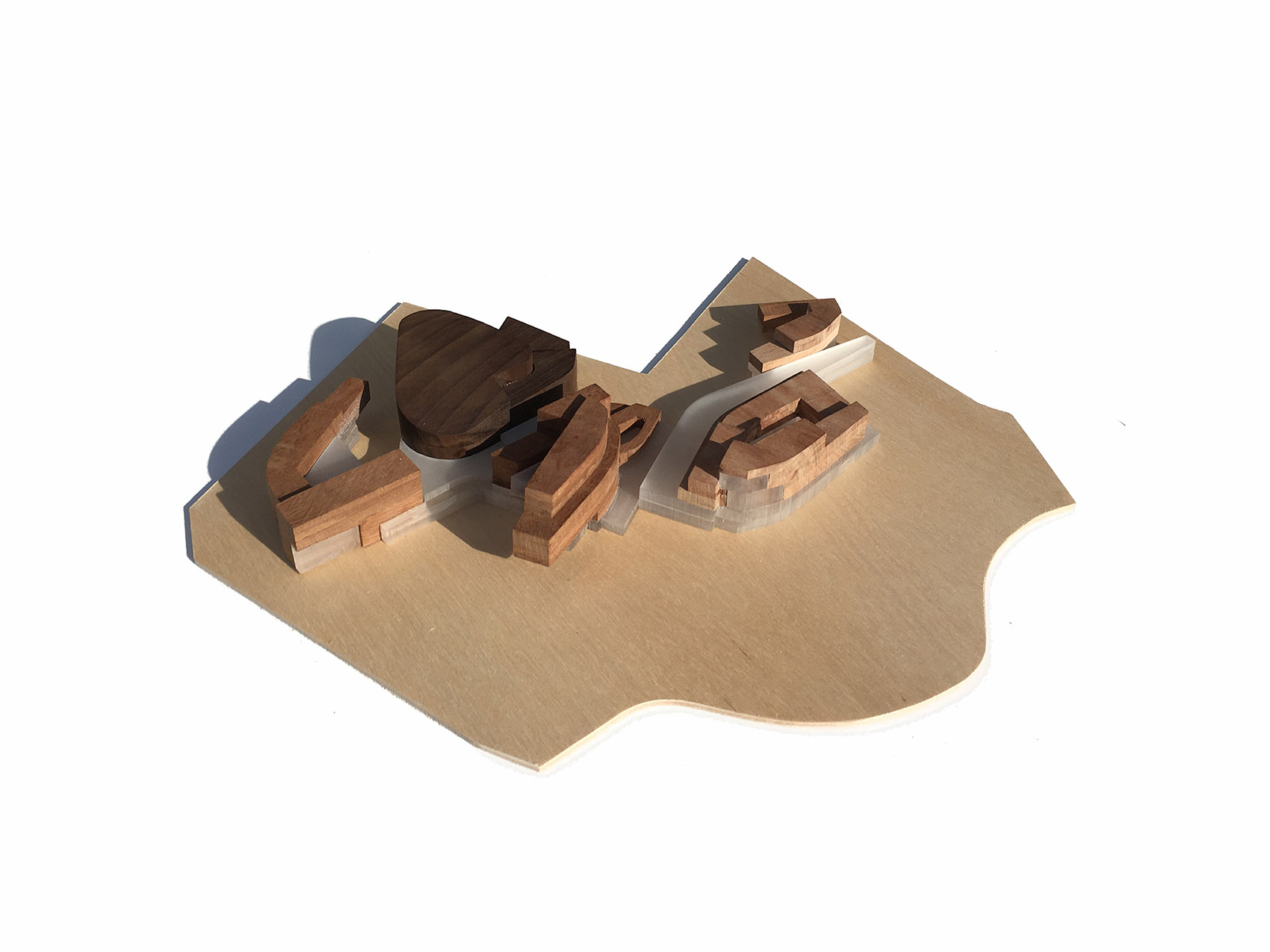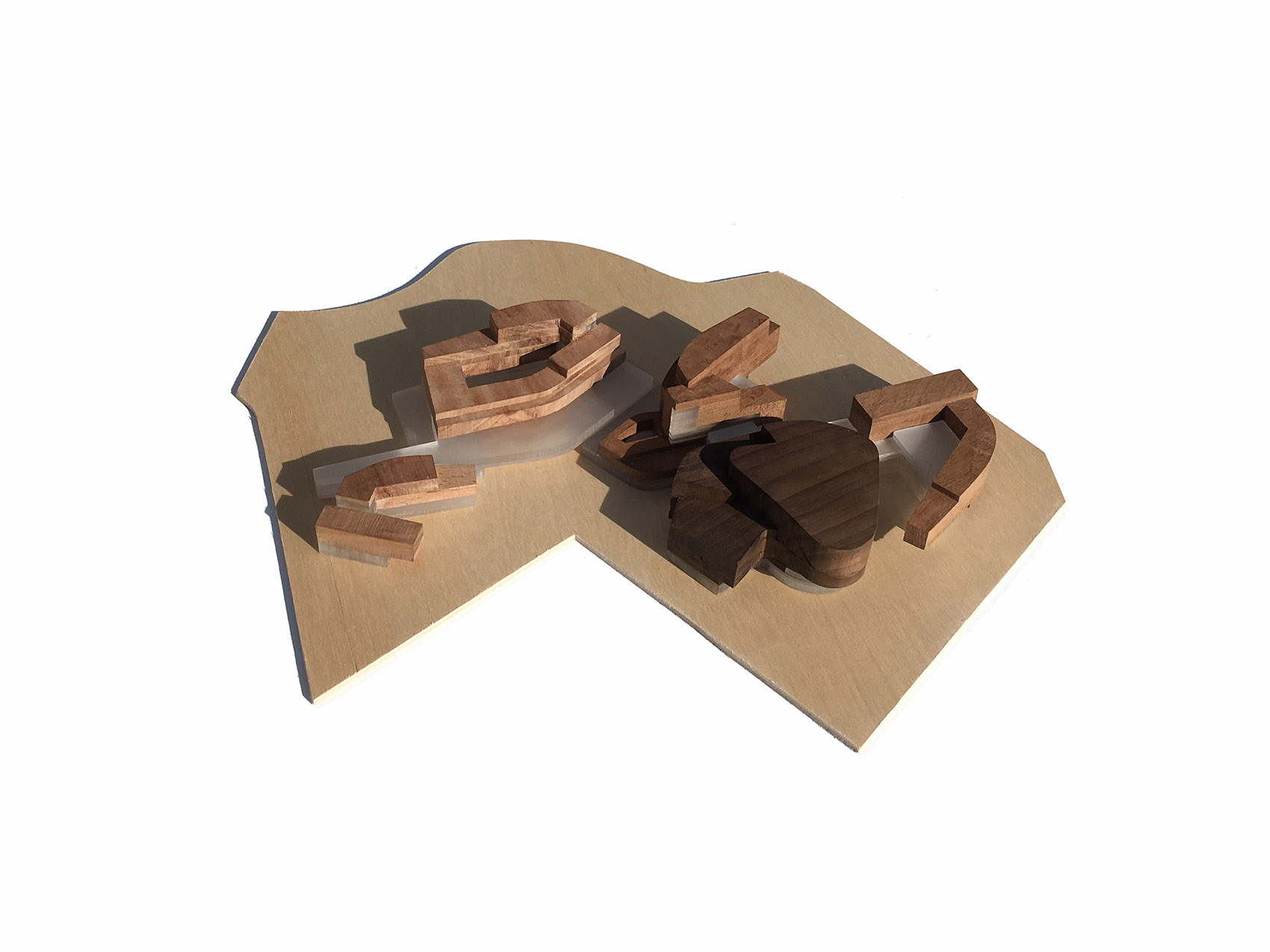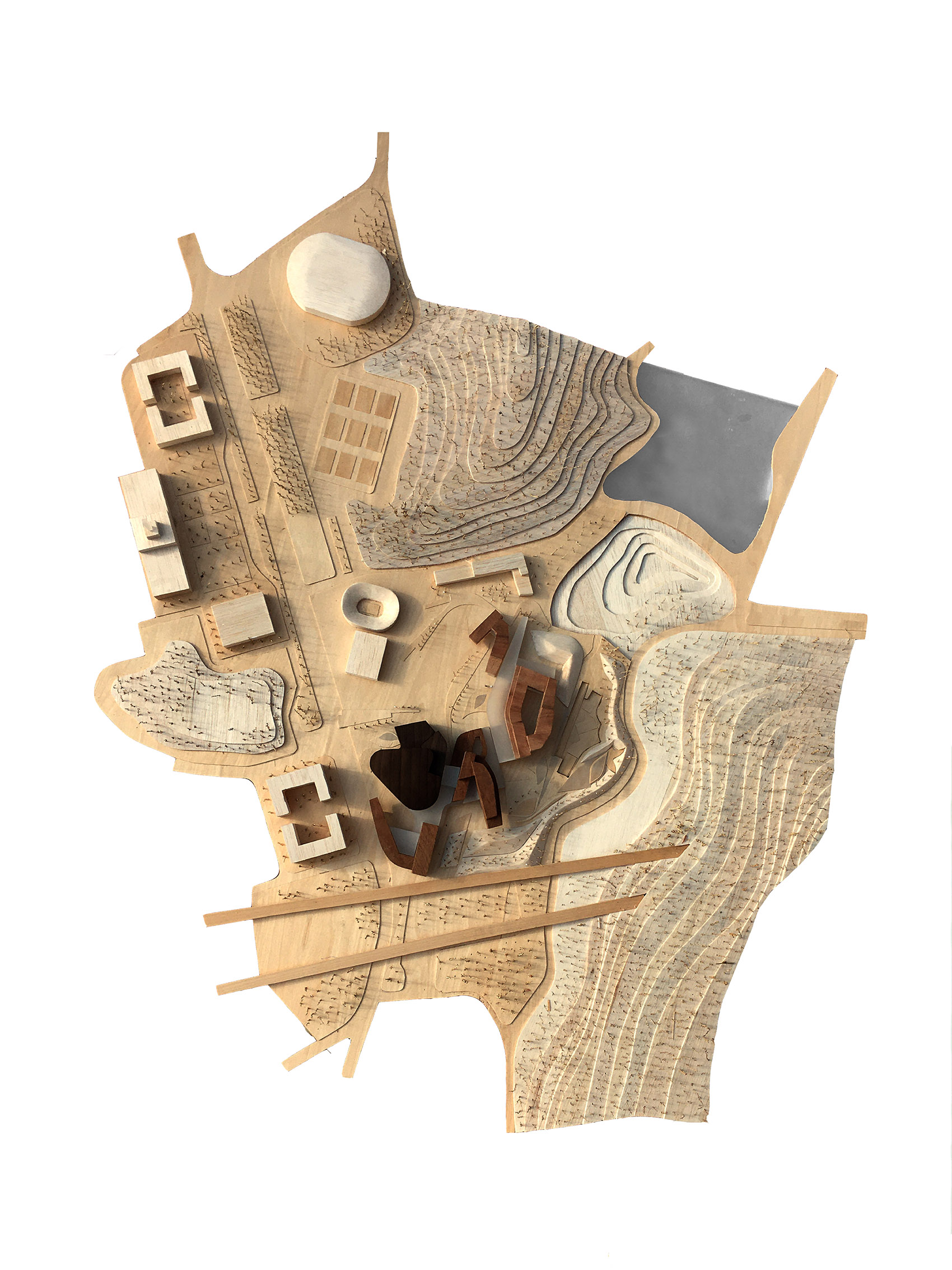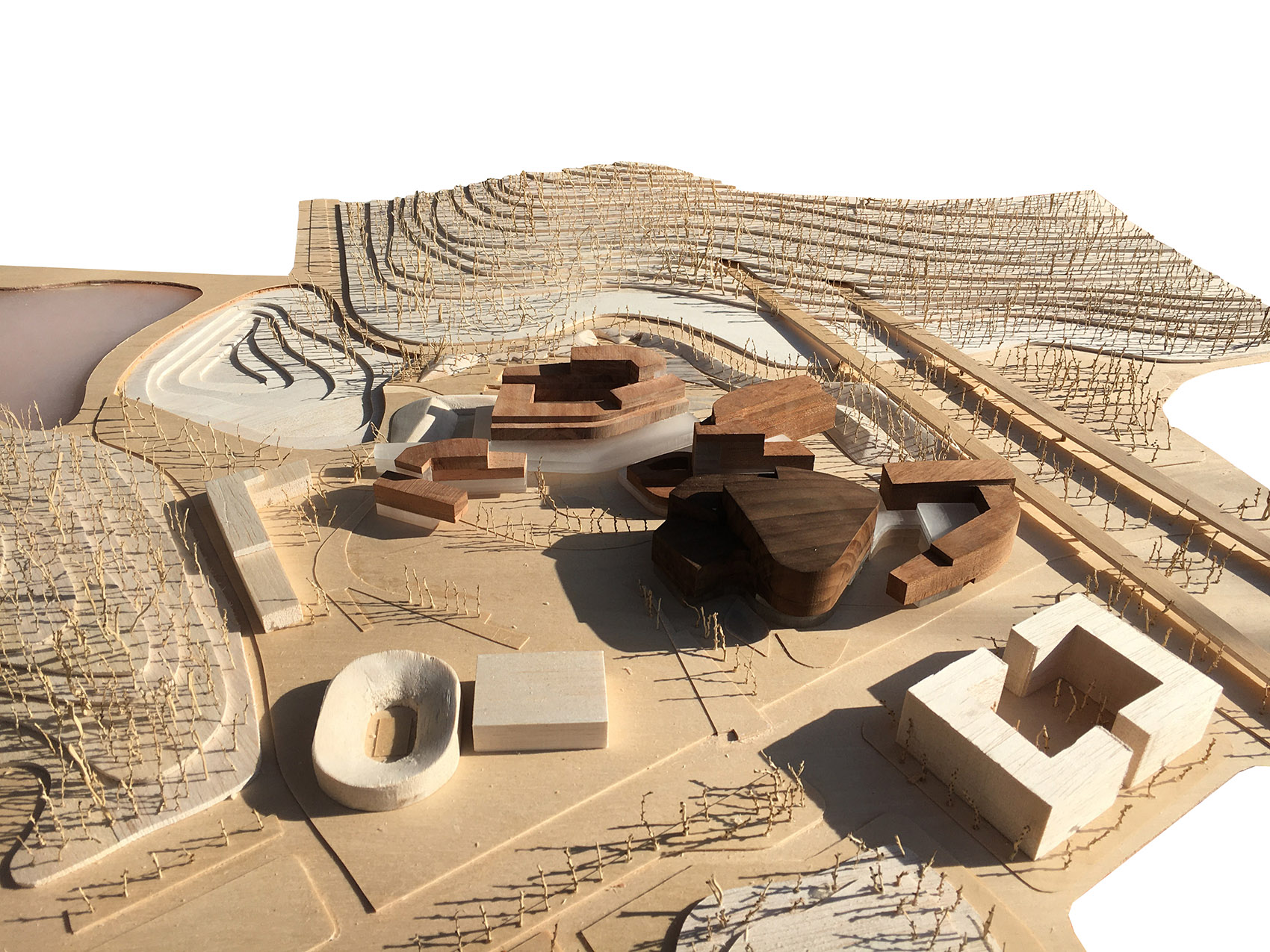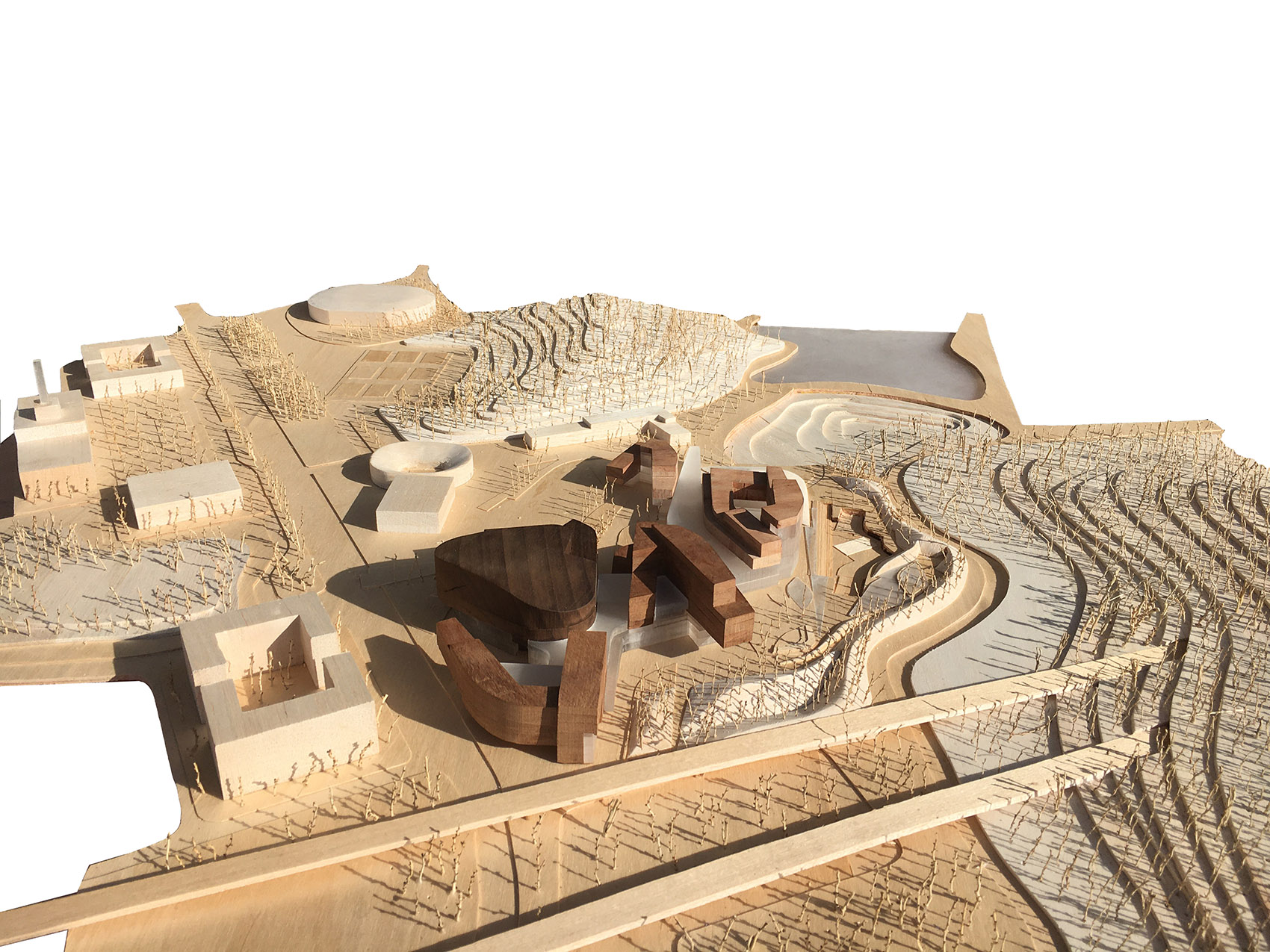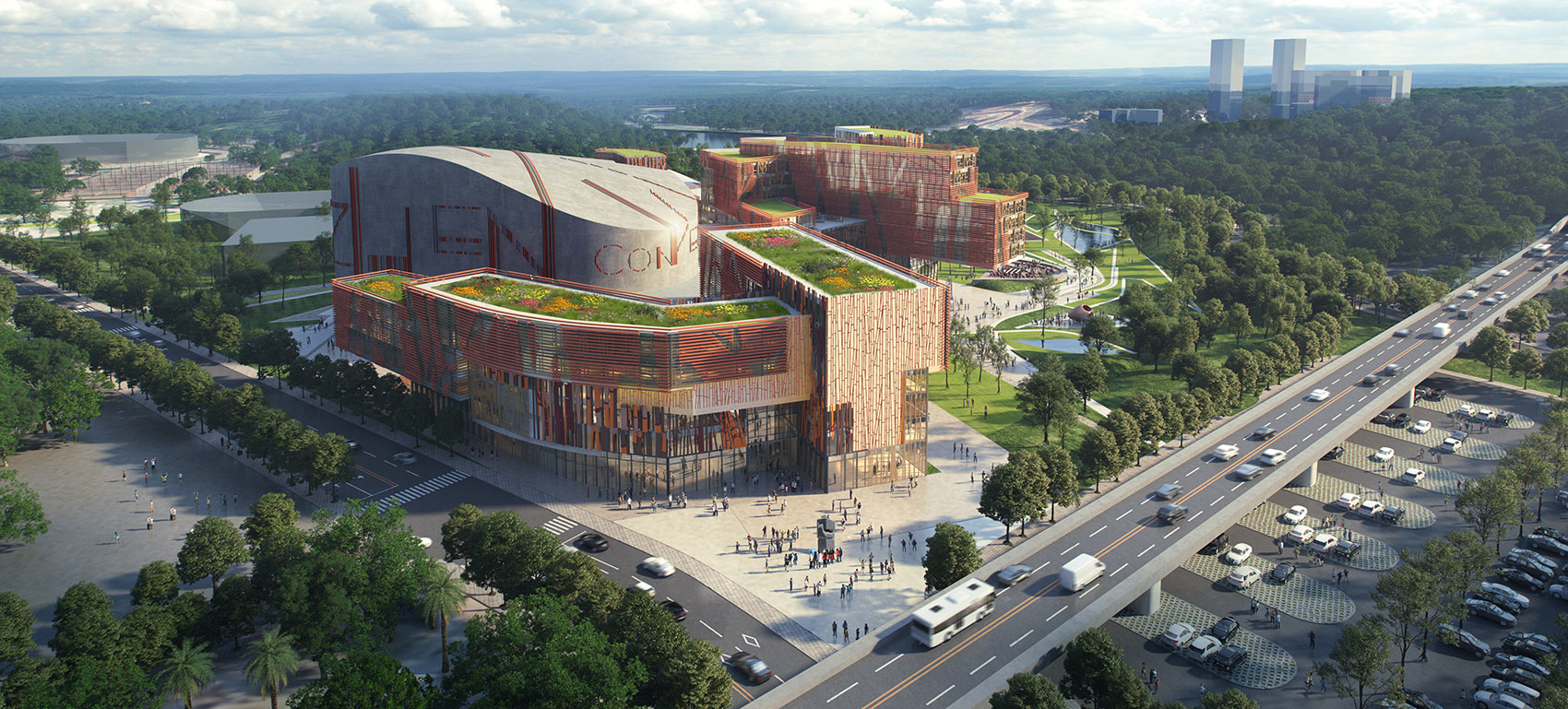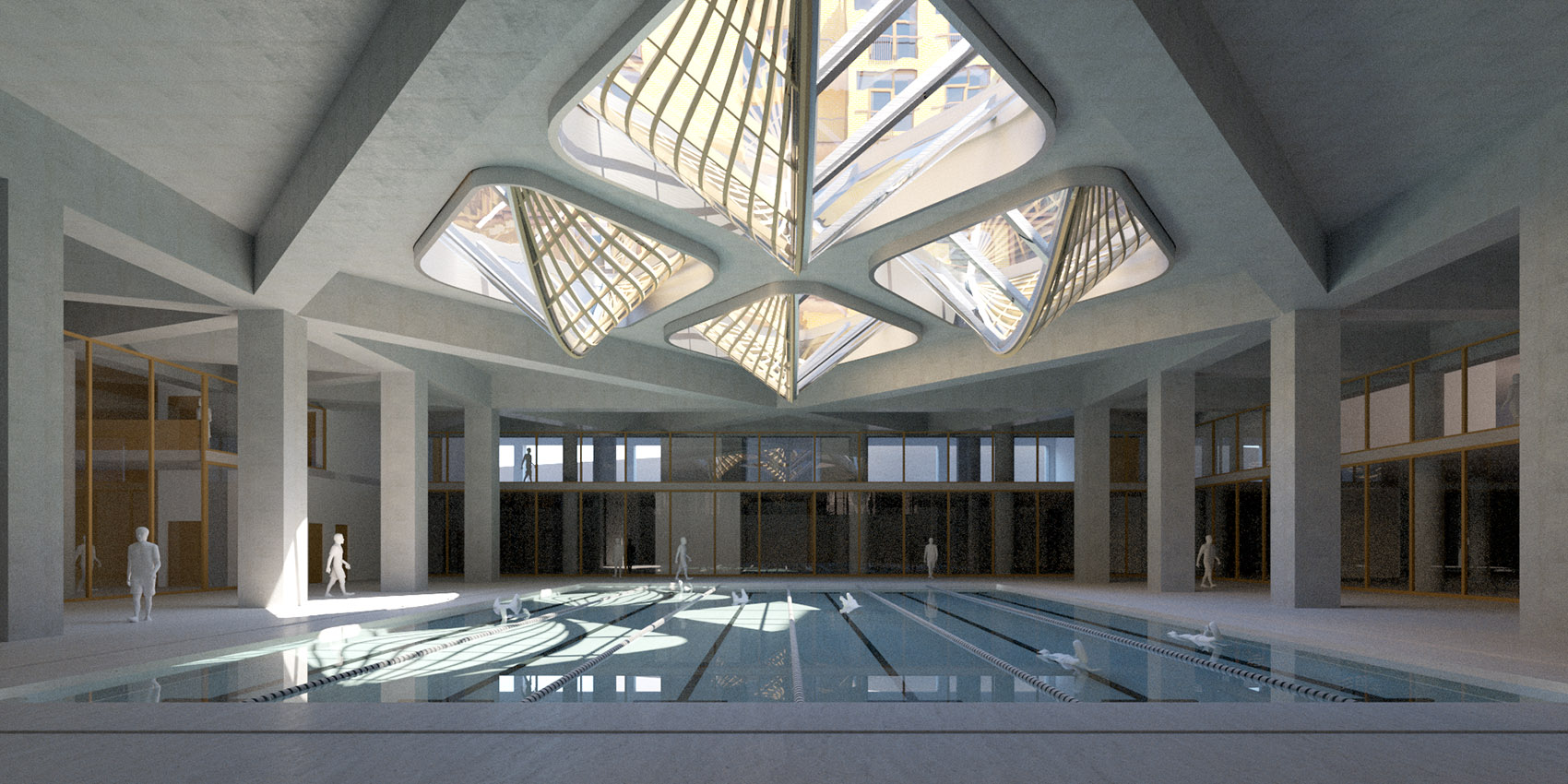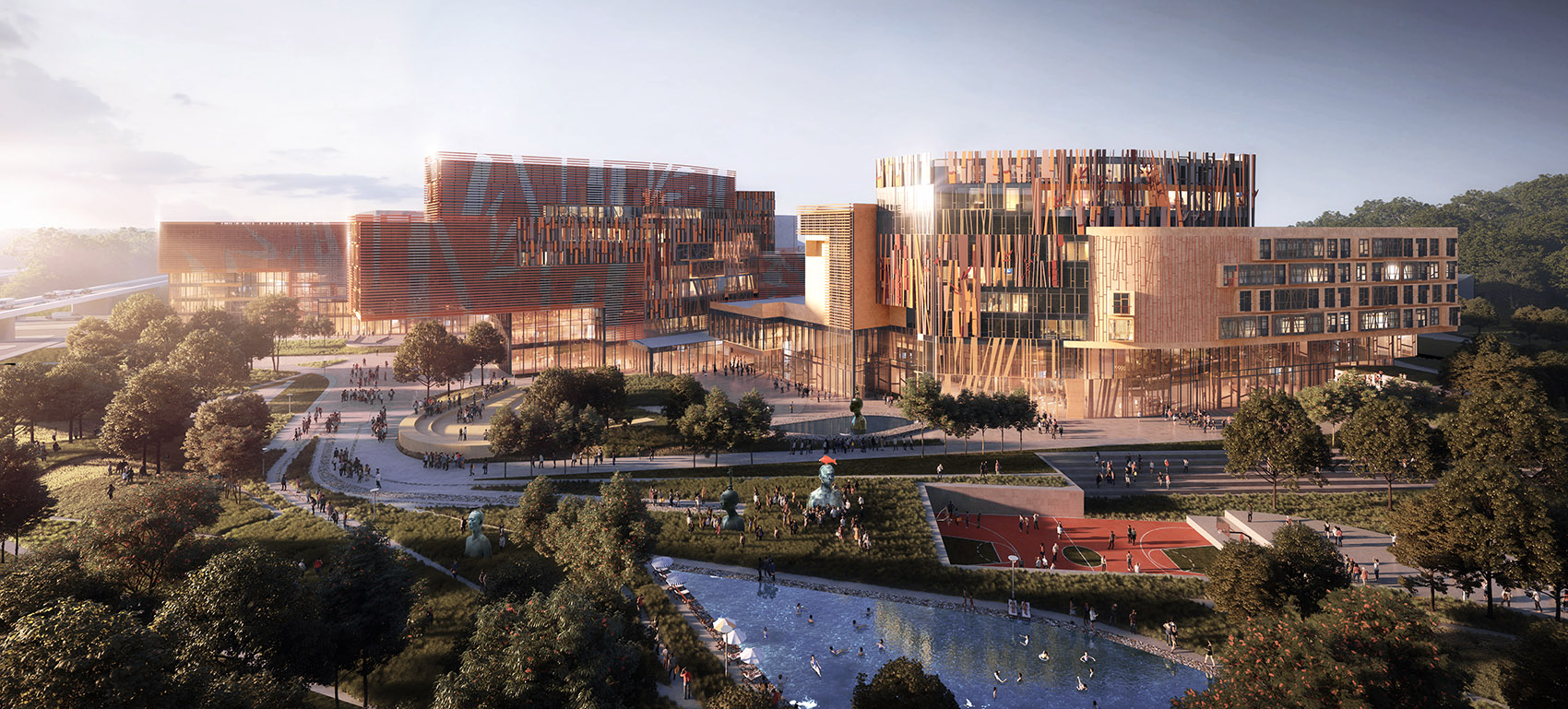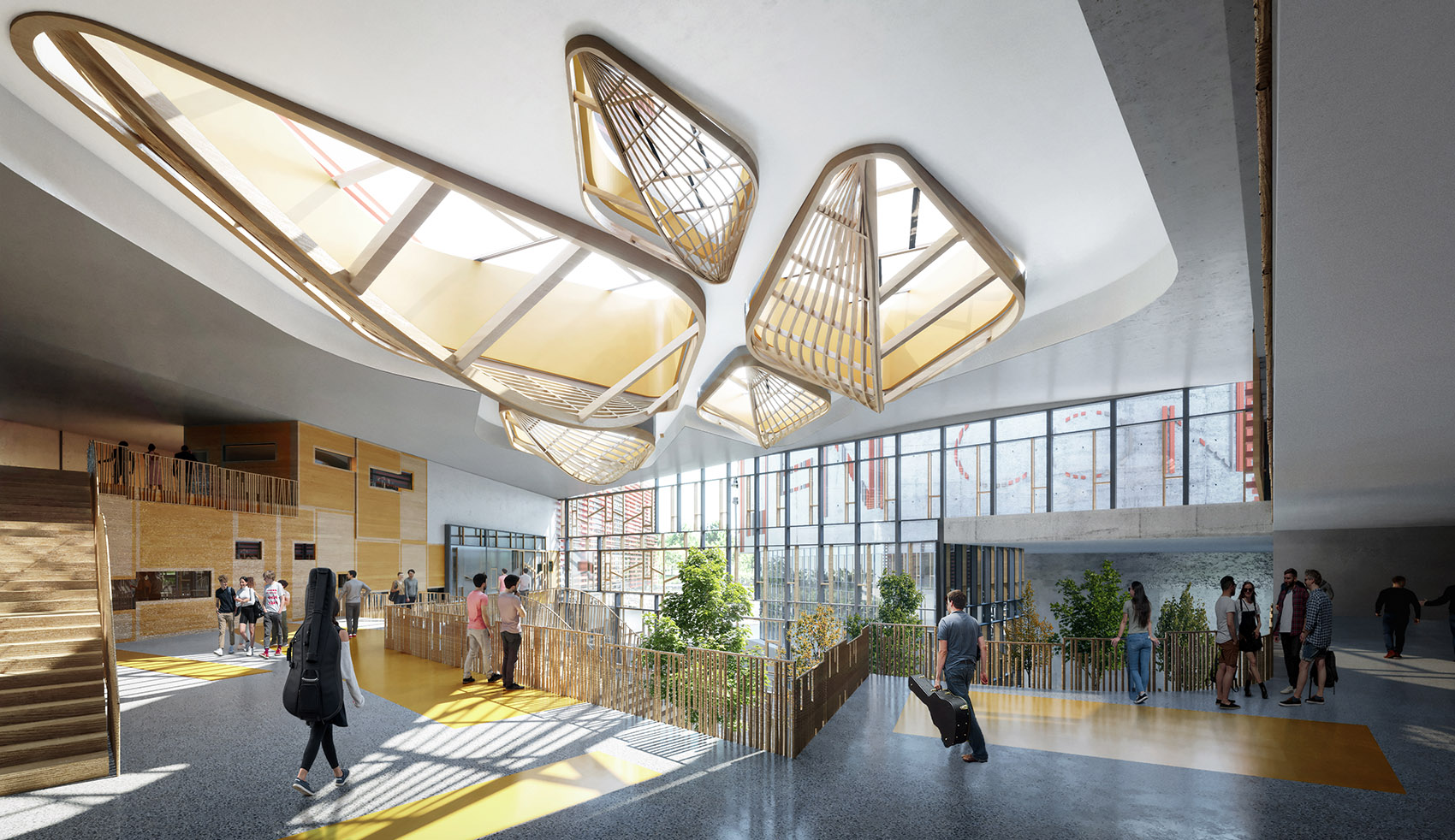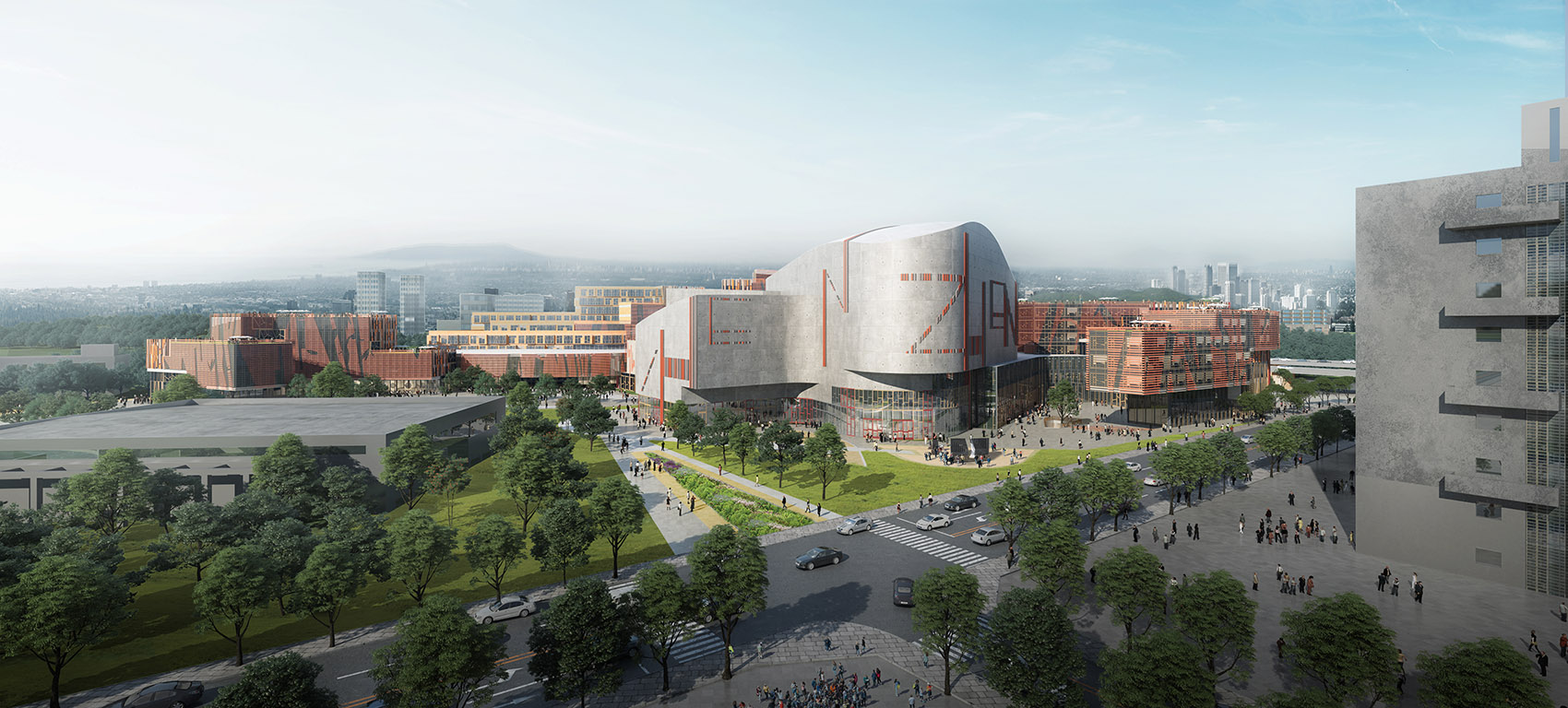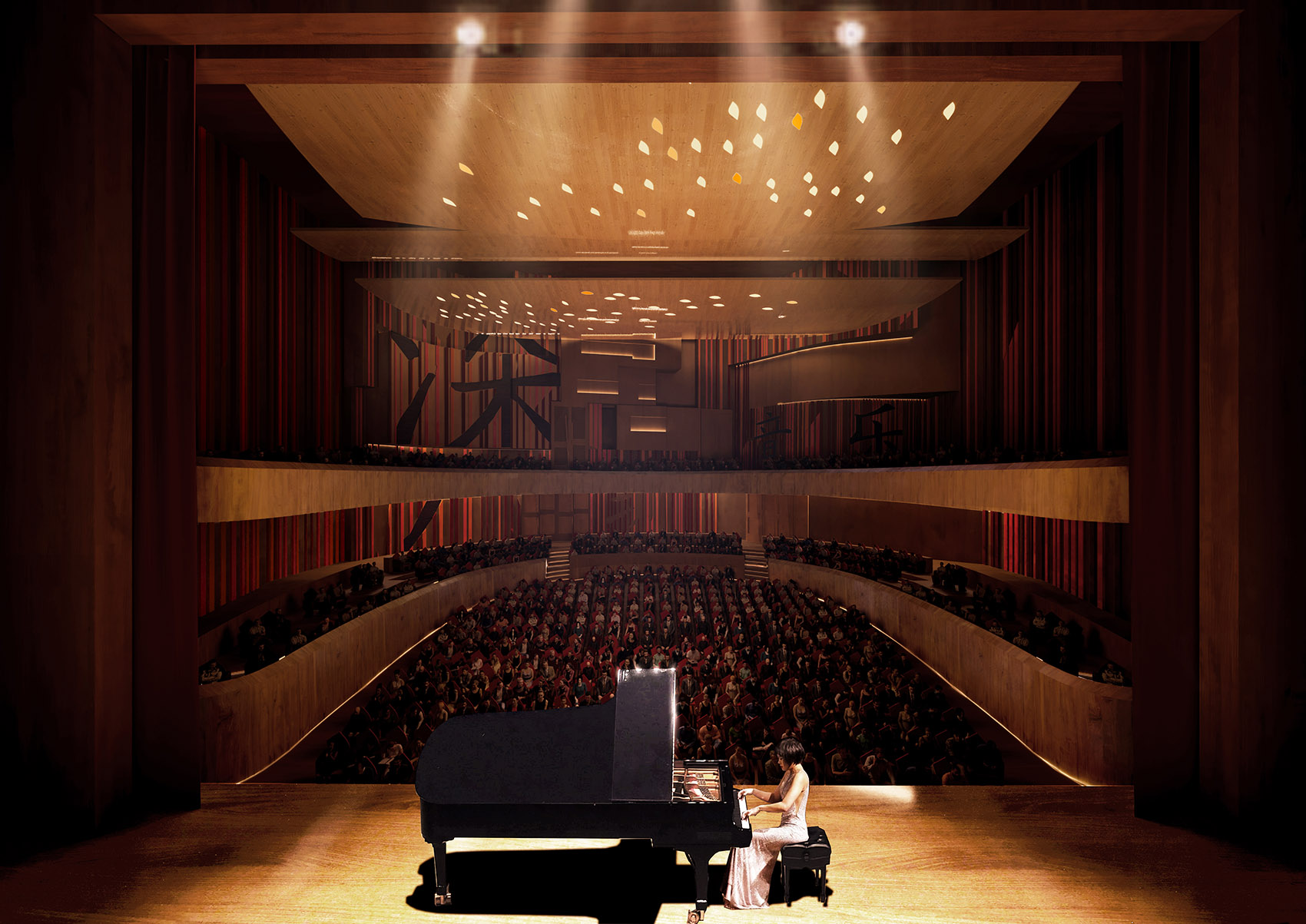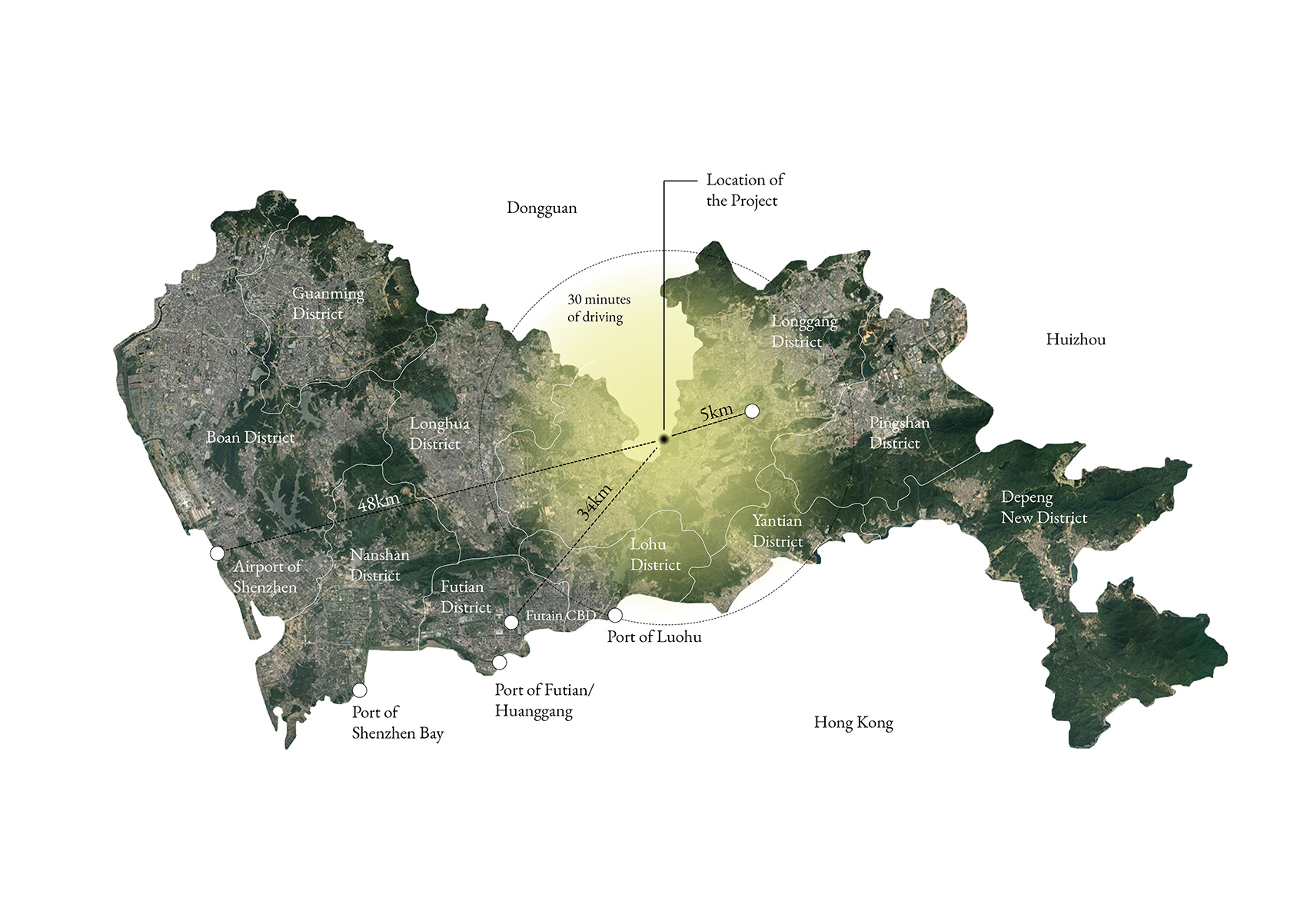由Benedetta Tagliabue率领的Miralles Tagliabue EMBT工作室赢得了深圳音乐学院的国际设计竞赛,并将与其他竞赛获奖事务所共同打造“深圳新十大文化地标”——该项目由深圳市政府资助,参与的建筑师包括扎哈·哈迪德、妹岛和世、让-努维尔和藤本壮介等。
Miralles Tagliabue EMBT studio, directed by Benedetta Tagliabue, wins the first prize in the international competition for the creation of the Conservatory of Music in Shenzhen. The studio is among the winners who will define the architecture of the 10 new cultural landmarks of the new era of the city of Shenzhen, Shenzhen Ten Cultural Facilities of New Era (Shenzhen New Ten) * promoted by the Municipal Government, among which are international studios such as Zaha Hadid, 妹岛和世, Jean Nouvel, Sou Fujimoto…
▼校园入口,Campus entrance © Fancy
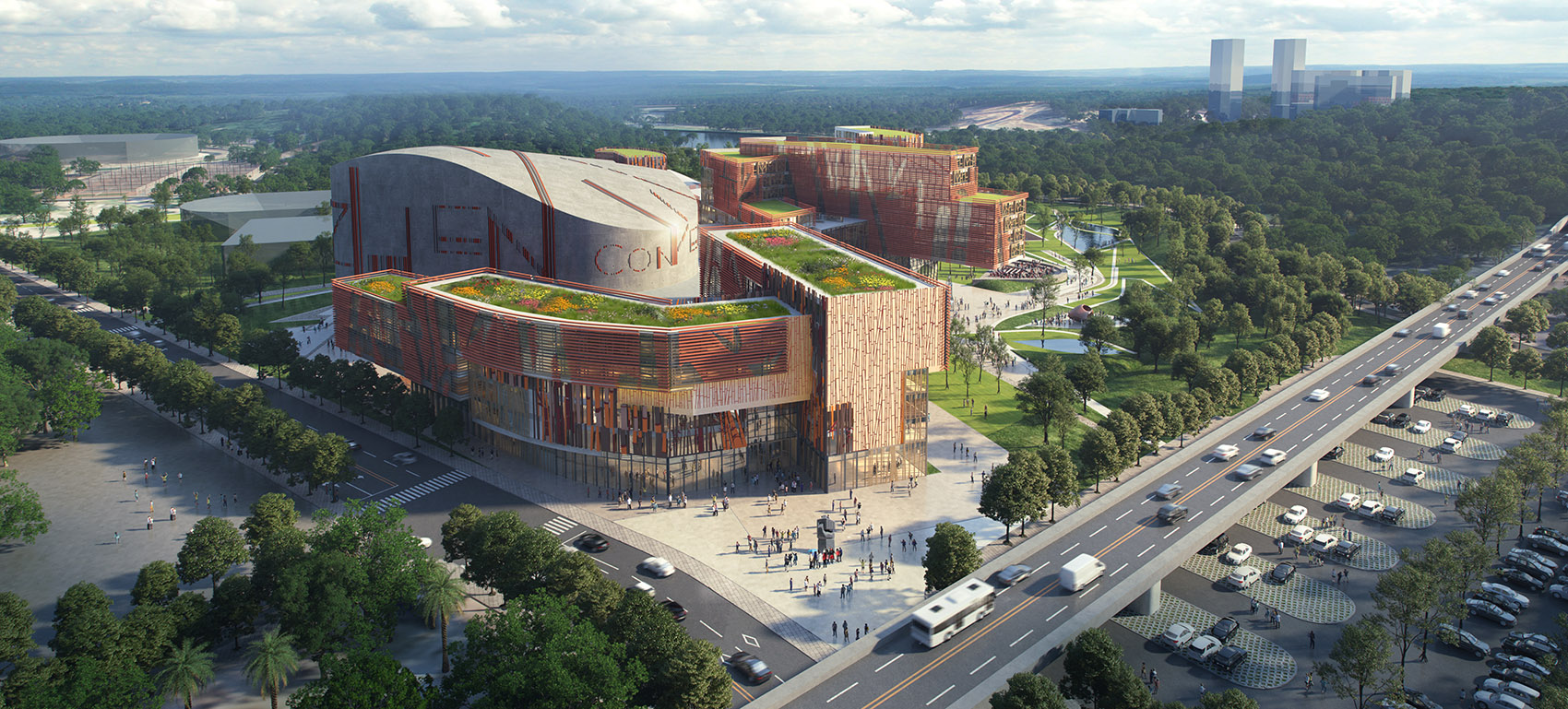
Miralles Tagliabue EMBT为深圳音乐学院打造的综合体,其特征是与自然发生对话,通过在特殊的景观中置入有机可持续的建筑,将音乐和艺术融入自然。这一新的文化地标将容纳一个国际化的创新社区,并将与其所在的具有高度国际声望的教育环境共同发展。
▼场地位置示意,Site Location © Miralles Tagliabue EMBT
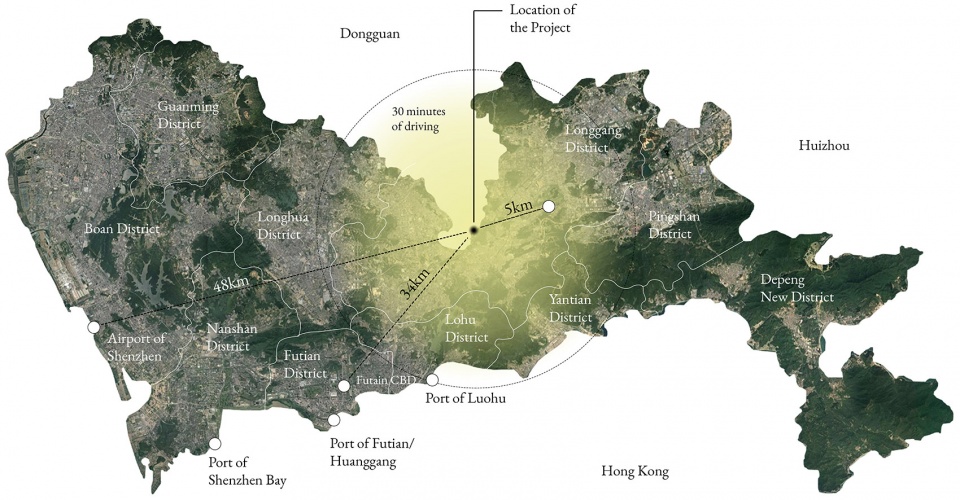
▼整体规划,Masterplan © Miralles Tagliabue EMBT
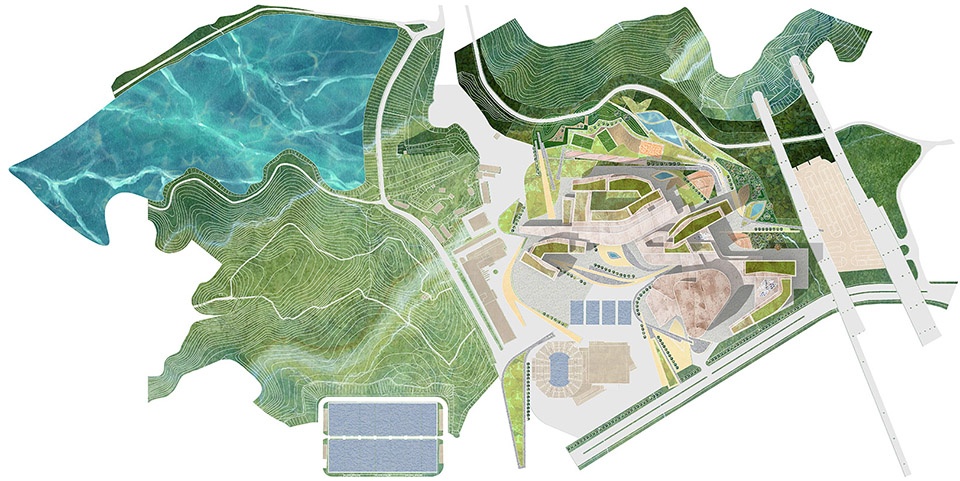
The complex designed by Miralles Tagliabue EMBT is characterized by the dialogue with the landscape, it integrates music and the arts in nature with a proposal of organic and sustainable architecture inserted in an exceptional landscape. The new cultural landmark will host an international and innovative community in an educational environment of recognized global prestige.
▼场地鸟瞰,Aerial view © Fancy
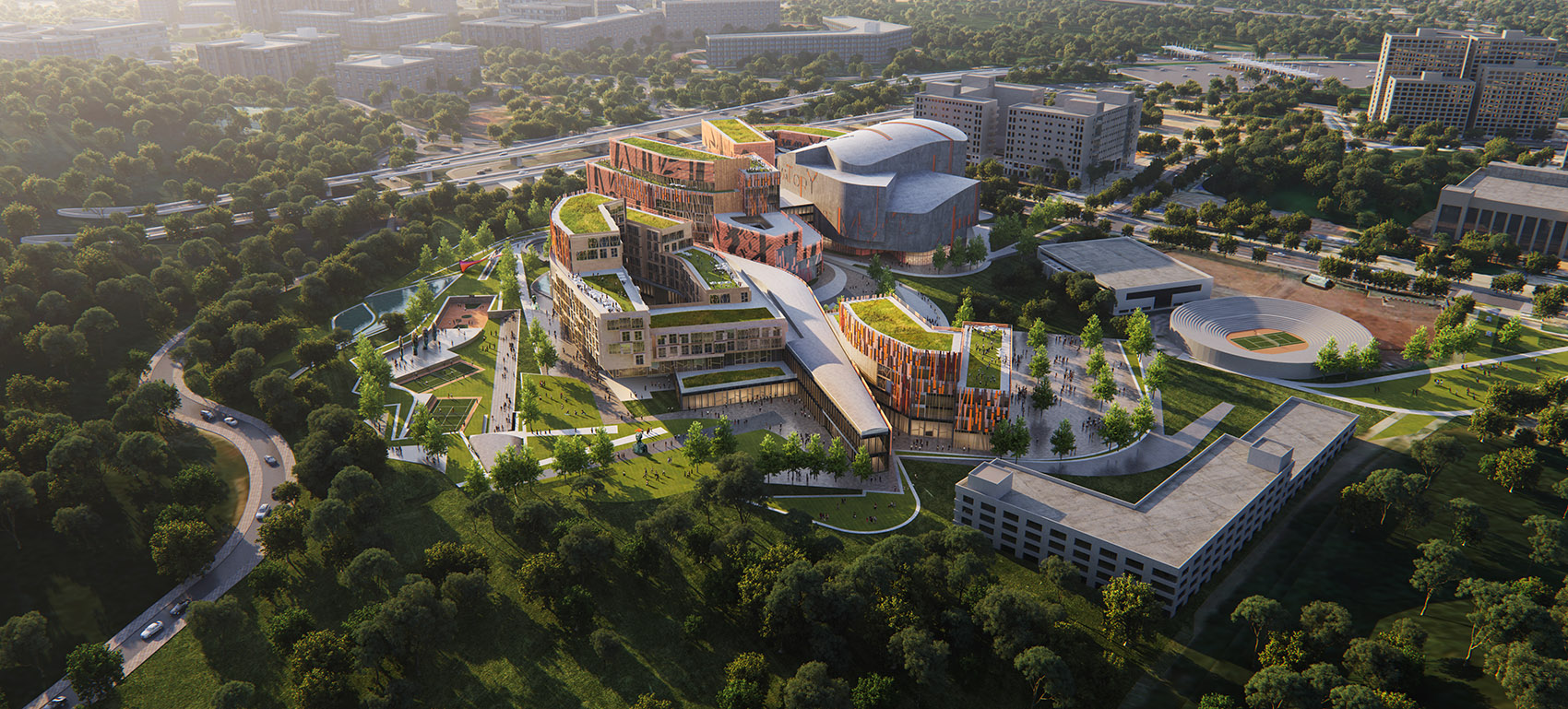
项目的整体规划包含多座建筑,共同组成深圳音乐学院的综合集群,并使其与香港中文大学深圳校区相融。综合体的设计策略以自然环境的平衡对话为基础,意在彰显并保护场地的环境价值。水与绿的对话创造出对于学习的全新理解:在与自然相融的宁静环境中进行教育和创造。
▼场地模型,Model plan © Shenzhen QZY Models Design
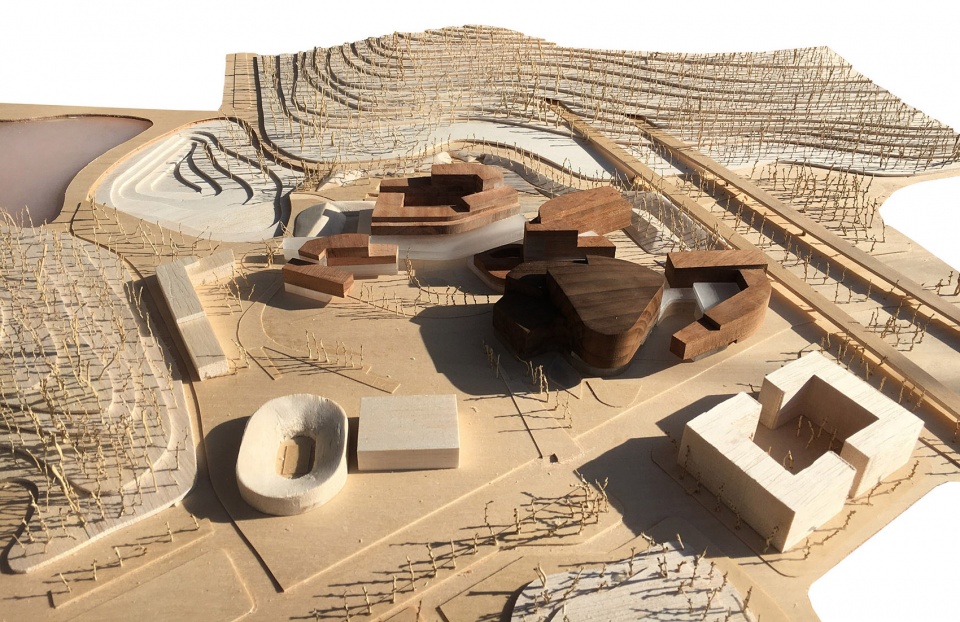
▼综合体模型,Complex model © Shenzhen QZY Models Design
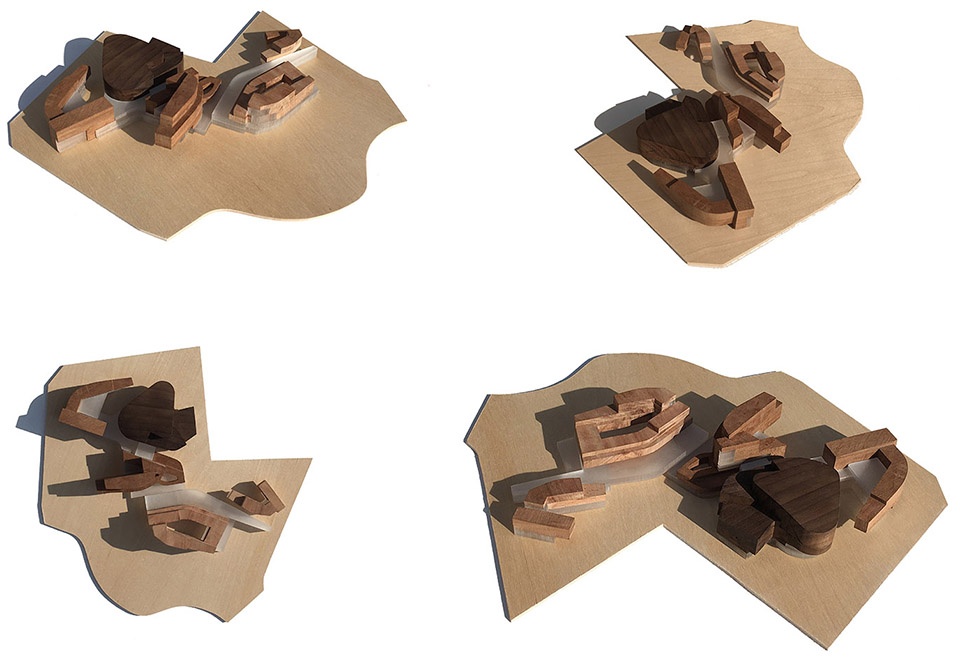
Miralles Tagliabue EMBT masterplan includes multiple buildings creating the Shenzhen Conservatory of Music complex and integrating it into the Chinese University of Hong Kong (CUHK) Campus, Shenzhen. The strategy of the complex is based on a balanced dialogue with the natural environment, highlighting as a priority the conservation of the environmental value of the site. This dialogue, with water and green, creates a new way of understanding learning: a place of calm and connection with nature for education and creativity.
▼校园主广场,Main plaza © Fancy
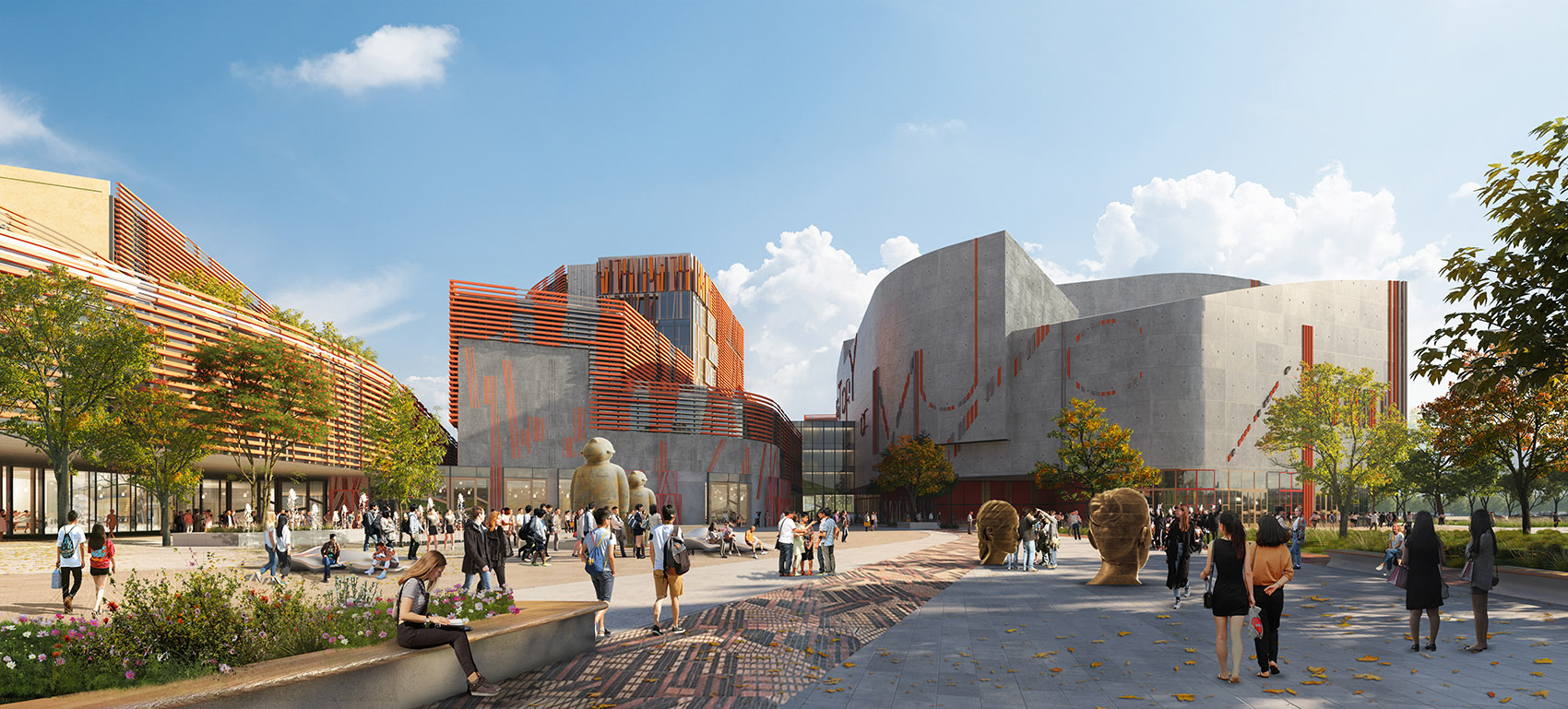
主剧场作为一个显著的角色从整个校园中脱颖而出,敞开于公众和城市。与自然环境之间的流畅衔接模糊了室内与室外的界限,实现了建筑与景观的完整融合。
The main theater stands out as the protagonist and places the campus from distant perspectives, opening it up to the public and the city. The division of the limits between the interior and the exterior is totally blurred thanks to the fluidity of the connection with nature, creating a complete fusion with the landscape.
▼剧场入口视角,Theatre entrance © Fancy

▼剧场内部,Theatre interior © Fancy
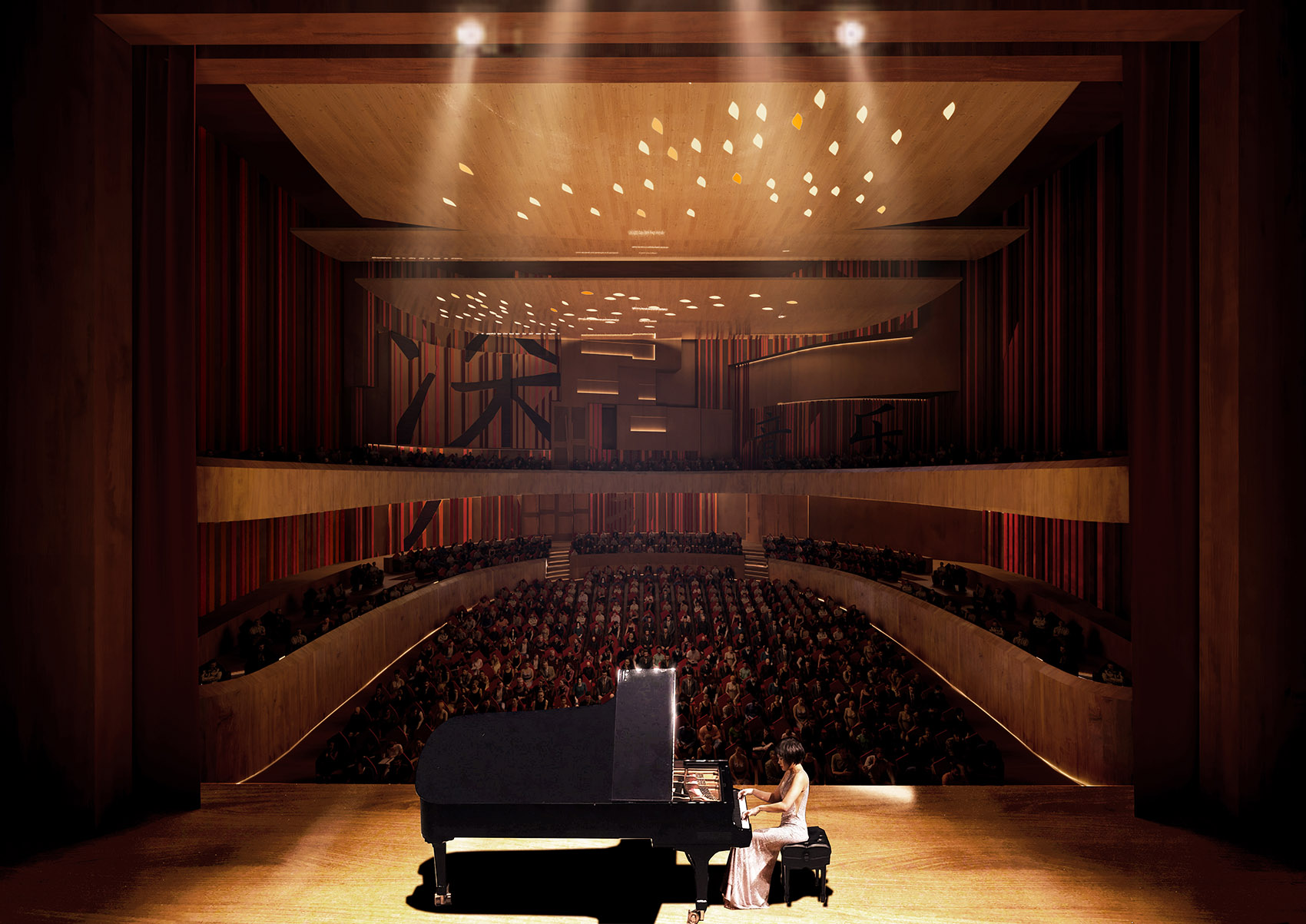
不同建筑的分布以尊重既有场地为前提与大学校园相连接,保证了此次介入的连贯性。被动式的能源管理策略是设计中一直关注的重点。设计团队对建筑的朝向、自然环境以及兼具传统性和环保性的材料(如木材和陶瓷)进行了细致的研究,最终实现了有机的建筑和可持续的外墙,并给人留下一种类似于乐谱的印象。
▼设计拼贴:竹与银杏,Collage: bamboo tree and gingko tree © Miralles Tagliabue EMBT

The distribution of the pieces respectfully connects with the existing University Campus to provide continuity to the intervention. Passive strategies for energy management have been a priority in the design. A detailed study of the orientations and natural, traditional and environmentally friendly materials, such as wood and ceramics, has been applied. The result is an organic architecture and facades of sustainable materials with compositions that resemble some musical scores.
▼综合体和校园景观,The complex and the landscape area © Fancy
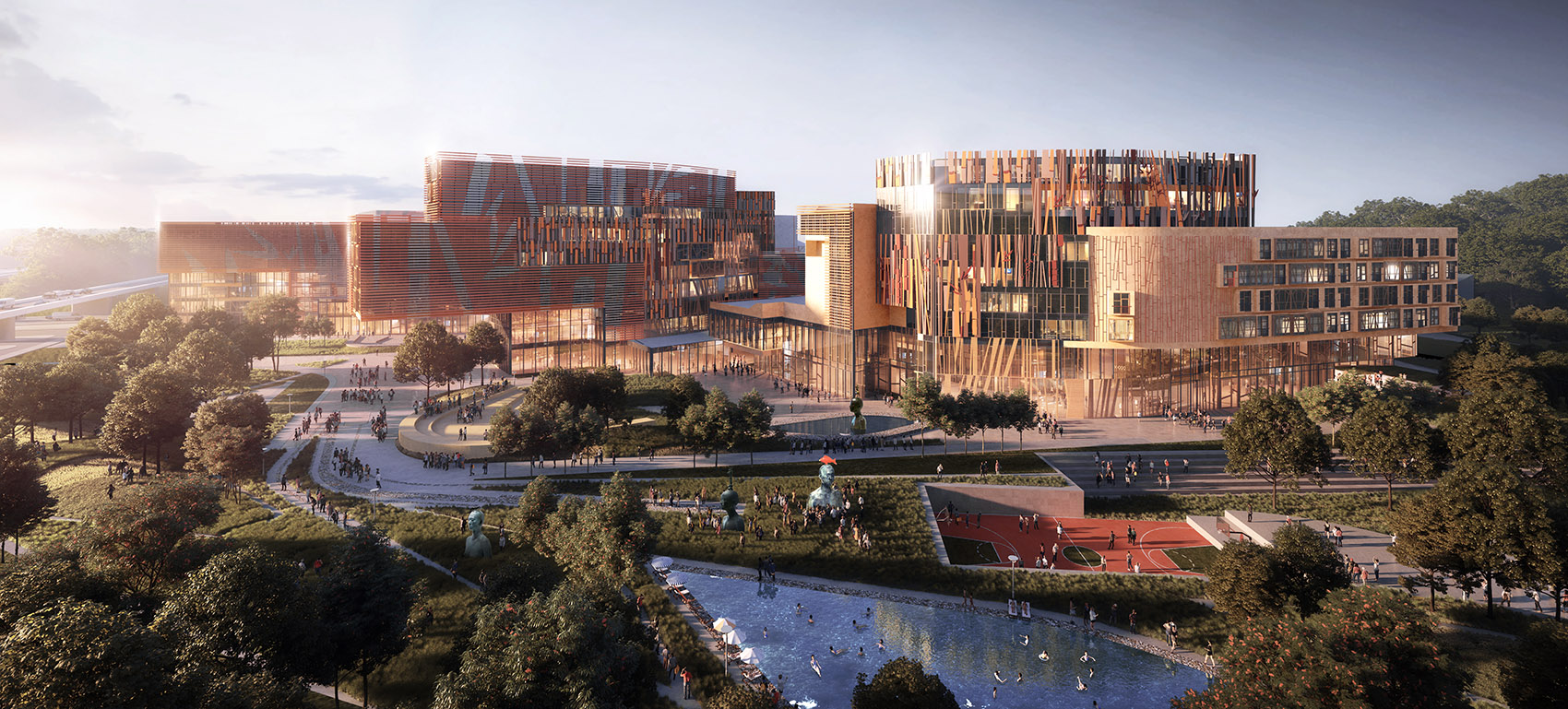
建筑群的主轴线衔接了主要的艺术表演场地,包括排练室、音乐厅和剧场。同时,明亮的绿色室内广场纵向地连接了学习空间和演奏空间,让整个建筑成为一个充满生命力的有机体:各个部分之间均相互联系,使教学和创新活动在共享的空间中流动。图书馆、学生宿舍与行政办公部门与综合体保持了横向连接,创造出一种基于自然对话的独特教育模式,彰显出建筑在激发大学社区创造力上的信念。
The main axis of the complex articulates the position of the buildings for artistic performance: rehearsal room, concert hall and theater. Meanwhile, the bright and green interior squares vertically link the learning spaces with those for musical interpretation, as if it were a living organism in which all parts are interconnected, in which education and creativity flow and share space. The library, the students’ dorms and the administration are also connected transversely to the complex. The set of buildings creates a unique educational model based on the relationship with nature and the belief in the ability of architecture to motivate creativity in the university community.
▼教学大厅,Teaching foyer © Fancy
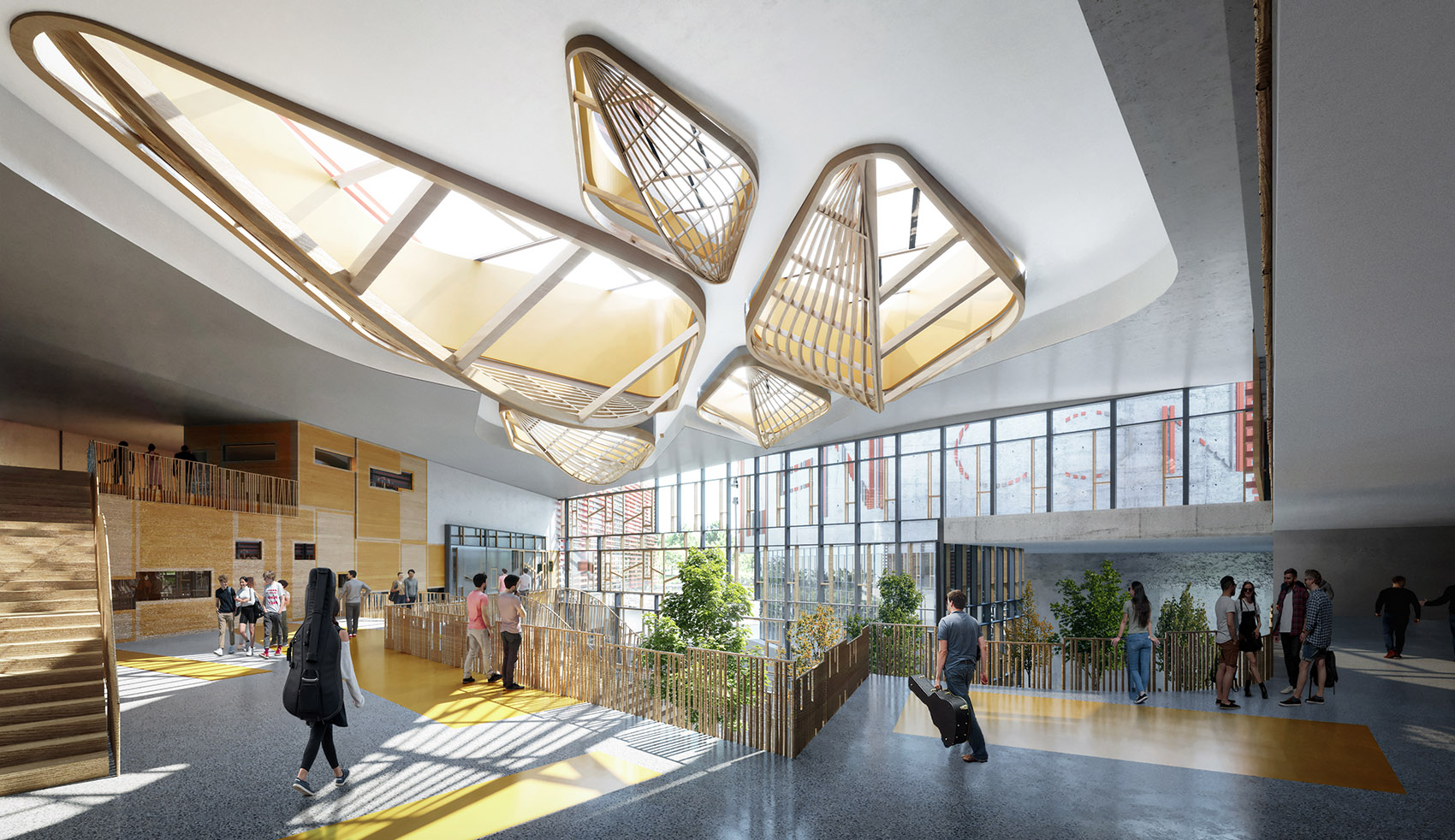
▼体育馆室内,Interior of the Sports Complex © Fancy

▼整体规划和一层平面,Masterplan and ground floor © Miralles Tagliabue EMBT
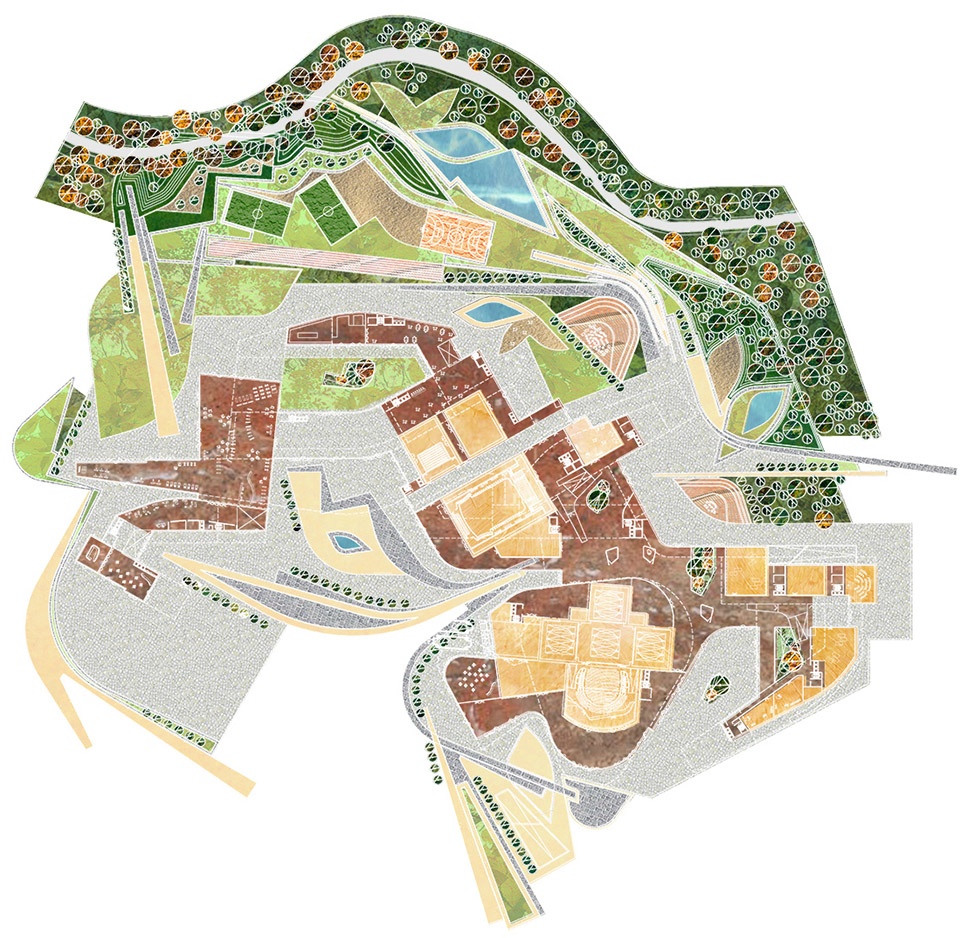
▼立面图,Facades © Miralles Tagliabue EMBT


▼立面-剖面图,Facade – section © Miralles Tagliabue EMBT

▼剖面图,section © Miralles Tagliabue EMBT

Name:International Competition for Architectural Design of Shenzhen Conservatory of Music Date: 2020 Location: Shenzhen, China Client / Organizer: Engineering Design Management Centre of Bureau of Public Works of Shenzhen Municipality Co-organizer: Shenzhen Position Spatial Culture Development Co., Ltd. Architect: Benedetta Tagliabue – Miralles Tagliabue EMBT Project director: Nazaret Busto Rodríguez – Miralles Tagliabue EMBT Design team: Julia de Ory Mallavia, Gabrielle Rotelli, Dimitris Stefanakis, Jaime Ruíz Fernández, María Borrell Vilanova, Guillermo Sotelo Santos, Pietro Borzacca, Ana Maria Lazar. Managing team: Zhuoran Zhao, Daniel Rosselló, Arturo Mc Clean, Roger Pérez Area: 73.777 m2 plot area, 129.700 m2 building (floor area) Typology: Cultural facility: urban design, public spaces, architecture (campus master planning and individual building design) Program: Campus buildings: teaching complex, experimental practice studio, library, sports complex building, dining hall, administrative office, faculty dormitory, college system. Performance buildings: theatre (700-seats), Concert hall (500-seats), Rehearsal hall (200-seats). Basement: parking and equipment. Collaborators Local Architects: HYP Arch Design – Zhao Kai, Hu Haitao, York Duan, Chen Min. Acoustic Engineering: Arup – Tateo Nakajima, Chris Mercer, Richard Bunn, Zoe Megins-Davies. Energetic Consultant: Transsolar Energietechnik GmbH Renders: Fancy Video: Undr – Xavi Parcerisas Model: Shenzhen QZY Models Design
